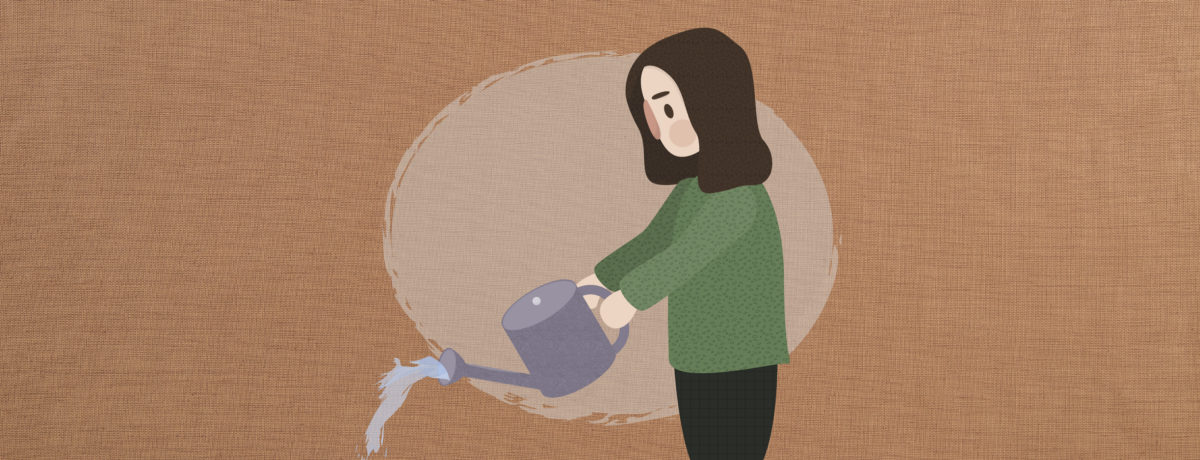I came in the next day and was ready to get my gut test reviewed by everyone. I really can’t remember how it happened. But let me just say that I was mentally exhausted by the end of it all. It turns out that once again, I messed up. What I had put together was more of a UX gut test.
I know why I had trouble. Besides the obvious miscommunication, I couldn’t wrap my mind around how a gut test would be useful in this scenario. How would showing websites to the client help me see what their preference for UI is? They already had a colour palette (which I planned on adding another swatch to). How would showing them other sites help? The visuals are super important for UI, but we already had assets. Even if the client liked the feeling visuals of beaches and sunsets gave her, her assets we had were simple with either black or white backgrounds. There wasn’t much leeway with the overall mood. Seeing as an e-commerce site heavily relies on photos of the products, whatever the photos look like will determine the mood. Therefore, the mood was already established because the photos were already taken.
Regardless of how I felt, I went through with it. I didn’t want to argue and delay progress. Plus, Jimmy was probably seeing something I didn’t.
My UI partner and I threw together bunch of different websites with different styles and feelings. We included a bunch of mood-boards in the test to determine possible colour palettes and styles.
I sat in front of all these slides and screenshots and was content that I finally got it right. Something just still didn’t sit right with me.
Officially, the is no director or head designer on this team. Everyone just kind of assumed a role. Jimmy is a natural leader and I accepted him as such.
I make up 50% of the UI team. The idea for the gut test came from Jimmy who is in the UX team. What I realized was that my process is different from his.
Everyone has a different process. The end product and deadlines are what matter. I had completed a competitor analysis already and had some palettes floating around my brain. Since I was responsible for my own work, I had to look out for myself. The group could definitely benefit from the gut test, but it just wasn’t working for me, at least this style of gut test.
For myself, I wanted to create several style tiles (small boards that contained example fonts and palettes that would be used in the finished product) that I could present to the client and get some immediate feedback. It would help me more to create options for the client, test them, get feedback, and then make decisions based on those results.
I was definitely going to take in whatever information I could get from the gut test, but just to be safe I had to do it the way I knew best and was most comfortable with.
It didn’t take long at all. I used the competitor analysis I did earlier to decide on a font and style. I liked the way they looked. Any comment the client makes on these tiles would give me a very direct and clear direction. I felt good. I don’t know why I was following orders when I, myself, could be the leader as well. In the end, I had to do what would help my process.
The client met with us. She took our gut test and we got interesting feedback. There was a lot of information more useful to the UX people. Maybe my UI partner picked up on stuff I didn’t. The website gut test didn’t really reveal too much for me, personally.
I then presented my style tiles. I proposed to change their font, brought up the proposal for a responsive logo, and took her through different palettes. I took notes on colour palettes she liked and didn’t like. This information gave me instant results. I was able to scrap the palettes she didn’t like and narrow my focus on just a few.
In the end, I got the information that I needed. Instead of going my own way and abandoning Jimmy’s idea of making the gut test, my partner and I were able to help the UX people get important information for their own work. As long as it helps someone in the team, we all benefit!
1. Ask for clarification and ask lots of questions. If I knew exactly what needed to be done, I could have saved time and cut the workload in half.
2. Do what needs to be done to nurture your process; only I know what I need to proceed. Had I not gone ahead and made my own presentation, I would have felt just as lost as I did in the beginning.
